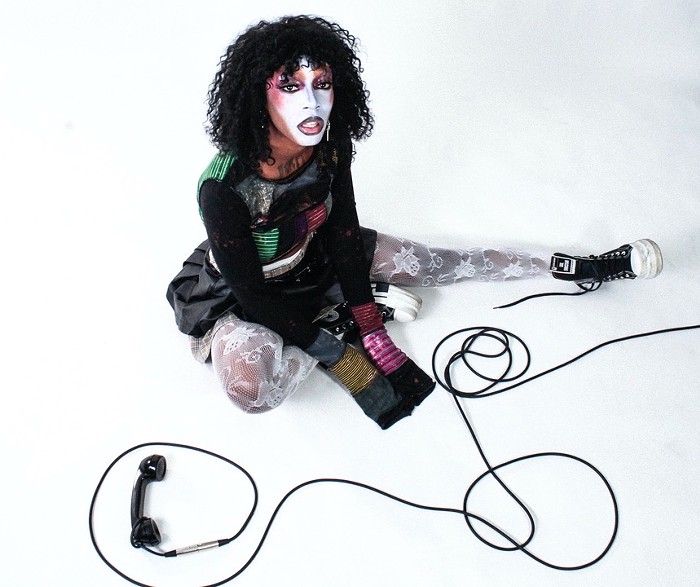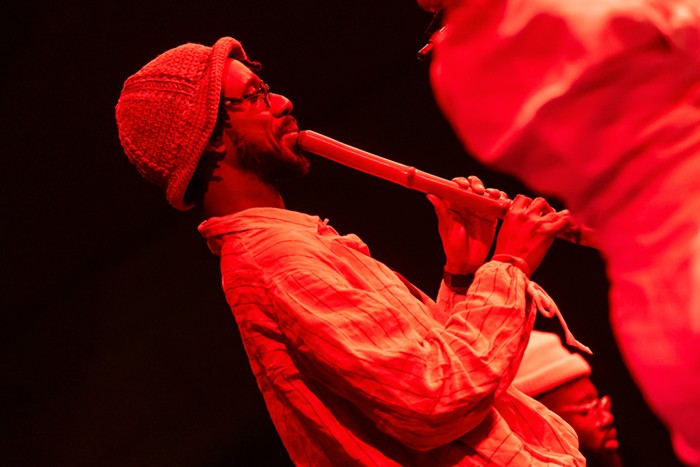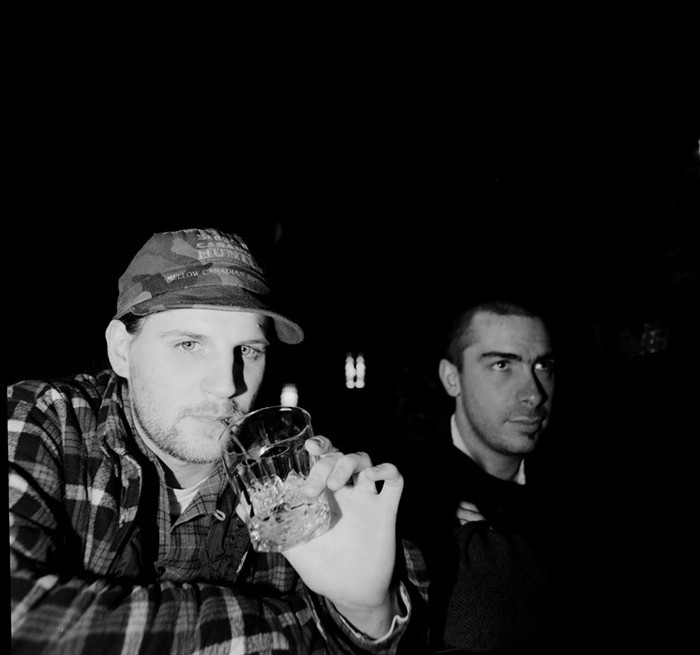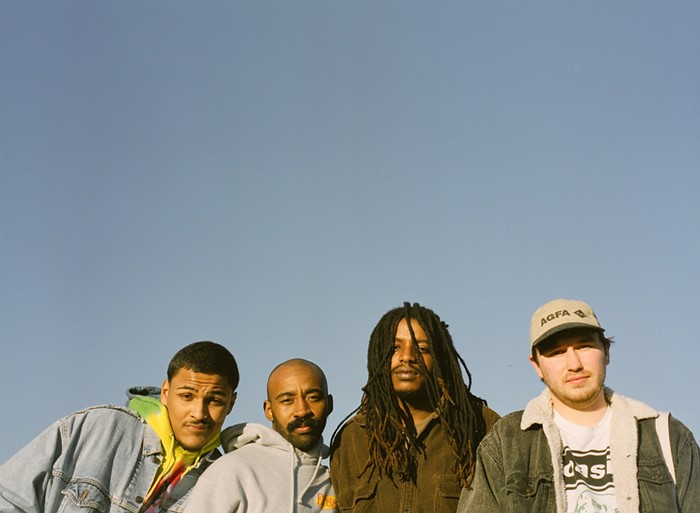
For the last six years, synthesizer savant Norm Chambers (aka Panabrite) has been a prolific creator of highly evocative records that have elevated him to this country's elite sphere of ambient-music producers. Every release—as well as those under his own name and the pseudonym Jürgen Müller—has teemed with cinematic moments, just ripe for enterprising directors to slot them into their films. That skill has finally come to fruition, as Chambers has been chosen to score Graphic Means, a documentary about the history of pre-internet (ca. 1950s-1990s) graphic design production that's being shot now by Portland director Briar Levit. Chambers's predilection for analog synthesizers and intricate and expansive compositional touches make him a natural choice for the job, as his sound often harks back to the kosmische musicians and avant-garde composers of the '60s, '70s, and early '80s.
Levit—who's a professor of graphic design at Portland State University and a seasoned aficionada of electronic music—had been a fan of Panabrite's after checking him out on a tip from a friend, Brian Foote, who runs the label Peak Oil Brion Paul. That Portland Panabrite performance convinced her that Chambers would be ideal for the Graphic Means soundtrack. "I had already used two BBC Radiophonic Workshop tracks by John Baker," Levit said in an email interview, "and really wanted to find someone who worked with those same kinds of 'vintage' electronic synths. The sounds are just unmistakably of the '60s and '70s. They have a certain warmth, while still feeling someone mechanical. Also, a little bonus—and I don’t expect many would make the connection—but electronic music went through a similar transition, in that the tools (instruments) went from being analog to digital. I love that little parallel."
So far, Chambers has only composed music for Graphic Means' trailer [see below], but he says in an email interview that he has "many ideas and concepts stocked up and definitely have a good mental image of the musical narrative." He admits he doesn't have a lot of experience working in this manner, but he says it helps that he can evoke specific musical eras "in order to help illustrate an overall feel, like something that has an old BBC Radiophonic Workshop or typical sort of library jingle aspect, or maybe something a bit more contemporary as the narrative moves along into the '80s and '90s.
Graphic Means (Official Trailer) from Briar Levit on Vimeo.
"In the end one of the tracks came out like some sort of Bruce Haack outtake," Chambers continues, "which was unintentional, but a pleasure nonetheless. In terms of soundtrack challenges I think more than the work process itself being unusual is the idea of knowing how to best represent a scene, considering the difference between your intuitive idea and what most people would expect during any given scene. These things are very subjective, so it’s a matter of finding something that will hopefully be suitable but not too obvious. Overall I would say it’s really fun to create sounds on the fly to moving images. It’s about as immediate a process as you’ll get."
Graphic Means isn't Chambers's first involvement with film scoring; he actually began to score a short film about five years ago, but it didn’t pan out. "It was an interesting short film by an Israeli animator, sort of a live-action/animation hybrid," he says. "Suffice it to say, it wasn’t a good fit in the end, but I do wonder what became of it as it was pretty intense visually."
In another way, Chambers's assignment for soundtracking Graphic Means makes sense: He's an illustrator, as well, although his output in that field has diminished due to increased concentration on his music. "I mostly just design my own album art and do an occasional gig poster now," he says. "I studied graphic design in college, and what’s particularly funny is that I think I was one of the last generations to study old-school paste-up graphic design/typography, in the very early '90s. I remember doing all that hard work by hand and how insanely precise it had to be. Years later I learned Photoshop and all the Adobe stuff, and it sure was a lot easier. This film appears to draw on some parallels in my life, actually, in terms of me being present during some of the new/old technology transitions in that industry. It’s a great way to feel old."
Ever industrious, Chambers has been working on two LPs and a few cassette releases under the Panabrite handle and his own name, all due out later this year and in 2017. Another Panabrite album's been finished for three years and that may finally drop this year, too. He's also making his live debut in New York City in late May, at a showcase organized by Grant Aaron of the Mysteries of the Deep podcast; it features techno producers Further Reductions, Patrick Russell, Ken Meier, and ambient musician William Selman. Look out for a Jürgen Müller remix of a Max Richter's "Dream 3", which came out March 4 on Deutsche Grammophon (yes, the esteemed German classical-music imprint).



















